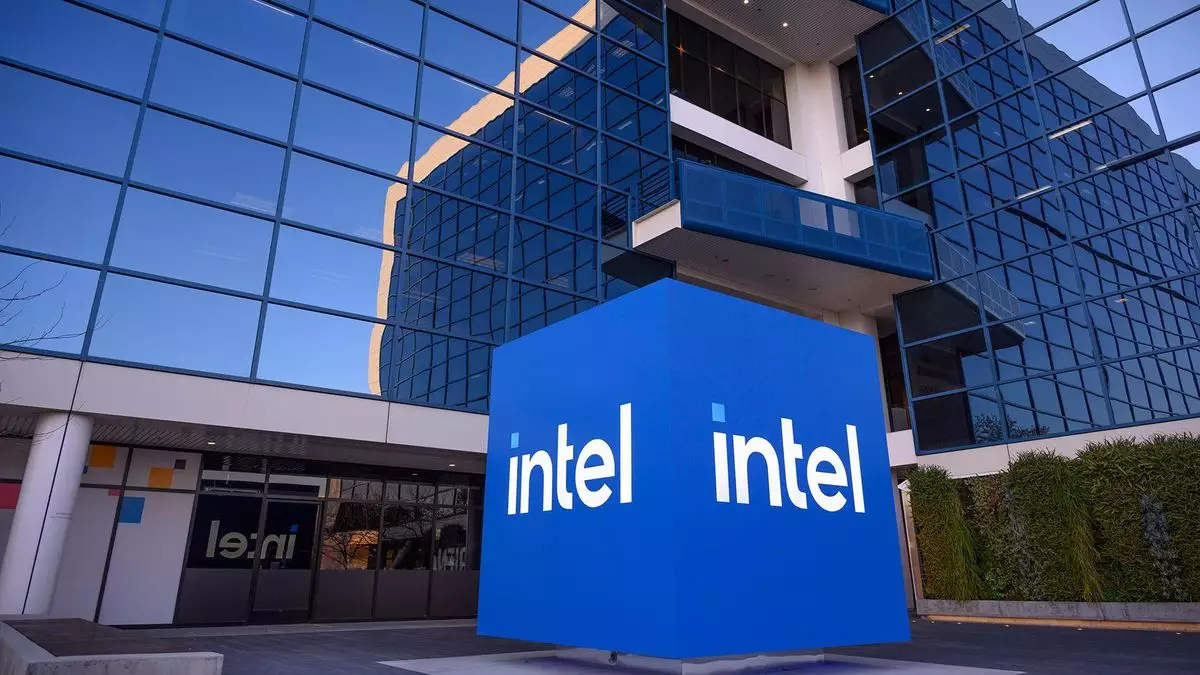Intel has long been regarded as a titan of the technology sector, pioneering groundbreaking advancements in microprocessor design. However, the saga of its strategic decisions reveals a company’s battle with inertia and the costs of missed opportunities. From an ill-fated attempt to acquire Nvidia to refusing early investments in burgeoning companies like OpenAI, Intel’s hesitance might just serve as a cautionary tale for more agile competitors in the market.
The story begins in the mid-2000s when Paul Otellini, then CEO of Intel, proposed acquiring Nvidia, a fledgling graphics company that was starting to make waves in the tech industry. Valued at a modest $20 billion at the time, Nvidia was a potential goldmine waiting to be tapped. However, the Intel board expressed skepticism about such a high-stakes acquisition, leading Otellini to abandon his proposal. Fast forward to today, Nvidia boasts a staggering market capitalization of approximately $3.5 trillion, firmly placing it among the most valuable companies globally.
This scenario illustrates the critical nature of decision-making in high-stakes environments. Decisions made—or not made—become pivotal moments in a company’s trajectory. An attendee of the fateful meeting characterized it as “a moment that could alter history,” reflecting how a single decision can haunt an organization for years to come. This incident underscores the importance of foresight in executive leadership.
Intel’s reluctance to acquire Nvidia can partly be attributed to its corporate culture, described as a “single-cell organism.” Executives were so focused on the x86 architecture and the dominance it afforded them that they failed to recognize emerging trends and opportunities. Former Intel CEO Craig Barrett likened the x86 business to a creosote bush, which poisons surrounding plants. This self-imposed isolation and fixation on short-term profits stifled innovation and fostered an environment resistant to change.
When strategically assessing acquisitions and potential partnerships, a forward-thinking mindset becomes imperative. A disconnect between existing products and anticipated market needs can lead to catastrophic outcomes, as in Intel’s case with Nvidia. In hindsight, their concentration on processors blinded them to the rising importance of graphics processing in increasingly data-centric industries.
Intel’s failure to acquire Nvidia wasn’t an isolated incident. Most recently, the company reportedly passed on a $1 billion investment in OpenAI, which later soared to an approximate valuation of $80 billion. An investment of that magnitude could have positioned Intel strategically in the AI landscape—a sector swiftly gaining importance and likely changing the fabric of industries.
Intel faces a critical juncture where its past decisions loom large over its current state. The tech giant is struggling with significant layoffs, manufacturing challenges, and an inability to keep pace with competitors. These issues point not only to operational deficiencies but also to a fundamental struggle within the organization regarding vision and strategy. It becomes essential for any company, especially one as substantial as Intel, to cultivate an adaptable and forward-oriented culture.
The trajectory of Intel’s decision-making process serves as a valuable case study for other organizations attempting to navigate a rapidly changing market. Companies must balance their historical successes with the importance of embracing change. This necessitates fostering a culture of innovation and risk-taking, where ideas can flourish without being choked by outdated mindsets.
The future remains uncertain for Intel, whose aspirations to reclaim its stature are hindered by both internal turmoil and fierce competition. In this volatile environment, revisiting their strategic choices—emboldened by a renewed commitment to innovation and adaptability—will be crucial.
While the phrase “you miss 100% of the shots you don’t take” might seem simplistic, it speaks volumes in the context of Intel’s history. The tech industry’s landscape is littered with examples of companies that took risks and reaped the rewards—something Intel must reconsider as it strives to recover its place among its peers.


Leave a Reply